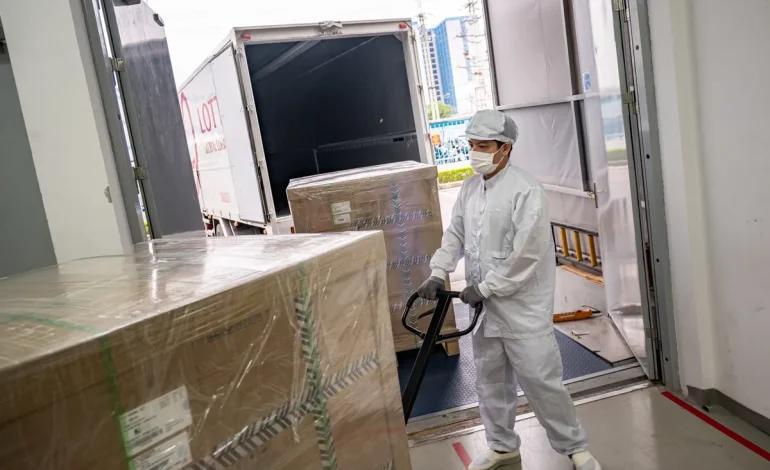Vietnam’s attempts to soften the impact of US tariffs through diplomatic efforts and trade reforms have not been enough to prevent one of the largest tariffs announced by the Trump administration, Bloomberg reports.
The US has imposed a 46% “reciprocal” tariff on Vietnam, marking a significant blow to the Southeast Asian nation’s economy.
The tariff comes as part of the Trump administration’s strategy to target countries with large trade imbalances with the US, a category Vietnam has fallen into. Despite Vietnam’s recent efforts to reduce its trade surplus with the US, including slashing tariffs on imports and committing to purchasing more high-value American goods, the new levy will have severe economic consequences.
“This is devastating for Vietnam,” said Trinh Nguyen, a senior economist at Natixis in Hong Kong.
The tariff not only jeopardizes the country’s economic growth but also risks deterring future foreign investment. As the largest exporter to the US in the region, Vietnam’s economic growth targets, which include aiming for a growth rate of at least 8% this year, are now in jeopardy.
The immediate effects of the tariff have been felt on the stock market, with the benchmark VN Index plunging 5.4%, its sharpest decline since April 2022. Experts suggest that if the tariffs remain in place, GDP growth forecasts for the country could be downgraded.
Vietnam has long been a critical hub for manufacturing and exports, with multinational companies such as Intel, Apple suppliers, and Samsung operating in the country. In particular, Vietnam is the second-largest supplier of textiles and apparel to the US, and many of these businesses are now at risk. Duong Thi Ngoc Dung, vice chairwoman of the Vietnam Textile & Apparel Association, expressed concern that the new tariff could drive up the price of Vietnamese goods in the US, potentially making them less competitive in the American market.
In an effort to improve its trade relations, Vietnam has taken steps to reduce its trade surplus with the US, which reached $123.5 billion last year, the third-largest trade gap after China and Mexico. The country recently implemented tariff cuts on a range of products, including liquefied natural gas, automobiles, and agricultural products.
However, the US administration has made it clear that the high tariff rate on Vietnam will remain unless further trade barriers to US exports are removed. A report by the US Trade Representative listed various trade barriers, including import bans and product registration requirements, as key reasons behind the decision to impose the 46% tariff.
In response, Vietnam is planning a high-level delegation to the US in an effort to negotiate a reduction in the tariffs. The delegation, led by Deputy Prime Minister Ho Duc Phoc, will include executives from key companies such as Vietnam Airlines and Vietjet Aviation.
Vietnam’s economy is heavily reliant on international trade, with exports accounting for about 90% of its GDP. For a country like Vietnam, which is still developing, absorbing the financial shock from these tariffs could prove difficult in the short term, as it has limited scope to adjust through currency or monetary policy.










The latest news in your social feeds
Subscribe to our social media platforms to stay tuned